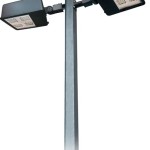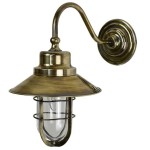How to Take Stunning Outdoor Photos: A Comprehensive Guide
Capturing breathtaking outdoor photos requires more than just pointing and shooting. Understanding light, composition, and camera settings can significantly elevate the quality of outdoor images. This guide provides insights and techniques to help photographers of all levels improve their outdoor photography skills.
Mastering Natural Light
Light is the cornerstone of photography. Learning how to manipulate and utilize natural light is crucial for capturing stunning outdoor images. The quality and direction of light dramatically impact the mood and atmosphere of a photograph.
Key points to consider:
- Golden Hour Magic: The hour after sunrise and the hour before sunset offer soft, warm, and directional light, ideal for landscape and portrait photography.
- Blue Hour Beauty: The twilight period just after sunset and before sunrise creates a cool, ethereal ambiance, perfect for capturing cityscapes and silhouettes.
- Overcast Days: Don't shy away from cloudy days. Overcast skies provide diffused light, reducing harsh shadows and creating even illumination, excellent for detailed nature shots and portraits.
- Backlighting: Shooting with the light source behind the subject can create dramatic silhouettes and highlight textures. Use spot metering to ensure proper exposure for the subject.
Composition Techniques for Engaging Photos
A well-composed photograph draws the viewer's eye and tells a story. Composition techniques help organize the elements within the frame to create visually appealing and impactful images.
Key points to implement:
- Rule of Thirds: Divide the frame into nine equal sections using two horizontal and two vertical lines. Placing key elements along these lines or at their intersections creates a balanced and dynamic composition.
- Leading Lines: Utilize natural lines like roads, rivers, or fences to guide the viewer's eye toward the main subject, adding depth and perspective.
- Framing: Use elements like arches, foliage, or windows to frame the subject, drawing attention to the focal point and adding a sense of depth.
- Negative Space: Incorporating empty space around the subject can emphasize the focal point and create a sense of simplicity and elegance.
Choosing the Right Camera Settings
Understanding camera settings empowers photographers to control the final image. Different settings are appropriate for various outdoor shooting scenarios.
Key settings to adjust:
- Aperture: Controls the depth of field. A wide aperture (low f-number) creates a shallow depth of field, blurring the background and isolating the subject. A narrow aperture (high f-number) keeps both foreground and background in focus.
- Shutter Speed: Controls the duration of the exposure. A fast shutter speed freezes motion, ideal for capturing action shots. A slow shutter speed blurs motion, creating a sense of movement.
- ISO: Controls the camera's sensitivity to light. A low ISO setting is best for bright conditions, minimizing noise. A higher ISO is necessary for low-light situations but introduces more noise.
- White Balance: Adjusting the white balance ensures accurate color representation under various lighting conditions, such as daylight, cloudy, shade, or tungsten.
Essential Equipment for Outdoor Photography
Having the right equipment can enhance outdoor photography experiences and improve image quality. While a basic camera setup can suffice, certain accessories can significantly expand creative possibilities.
Equipment recommendations:
- Tripod: Essential for sharp images, especially in low light or when using slow shutter speeds. A tripod also helps maintain consistent framing for time-lapse photography.
- Polarizing Filter: Reduces glare and reflections, enhancing color saturation and contrast, particularly in landscapes and water scenes.
- Neutral Density (ND) Filter: Allows for slower shutter speeds in bright conditions, enabling creative blurring effects like flowing water or moving clouds.
- Lens Selection: Different lenses offer varying perspectives. Wide-angle lenses are ideal for landscapes, while telephoto lenses are suited for wildlife and sports photography.
Planning and Preparation for Outdoor Shoots
Thorough planning is essential for successful outdoor photography. Researching locations, understanding weather conditions, and packing appropriate gear contribute significantly to capturing memorable images.
Key planning steps:
- Location Scouting: Research potential locations beforehand to identify ideal shooting spots and understand lighting conditions at different times of day.
- Weather Check: Monitor weather forecasts to anticipate lighting conditions and dress appropriately for the environment.
- Gear Checklist: Ensure all necessary equipment, including batteries, memory cards, and appropriate lenses, are packed and ready.
- Golden Hour/Blue Hour Timing: Plan shoots around the golden and blue hours for optimal lighting conditions.
Post-Processing Techniques for Enhanced Images
Post-processing is an integral part of the photographic workflow. Editing software allows for refining images and enhancing their visual impact. However, the goal should be to enhance, not manipulate, the original scene.
Key post-processing considerations:
- Adjusting Exposure and Contrast: Fine-tune brightness and contrast to optimize the image's tonal range.
- White Balance Correction: Ensure accurate color representation by adjusting white balance.
- Sharpening and Noise Reduction: Enhance image sharpness and minimize digital noise, especially in images taken at higher ISO settings.
- Cropping and Straightening: Refine composition by cropping and straightening the image.
- Selective Adjustments: Utilize tools like brushes and gradients to make targeted adjustments to specific areas of the image.
Respecting the Environment and Wildlife
Outdoor photography provides opportunities to connect with nature. Practicing responsible photography ensures the preservation of these natural spaces for future generations.
Key principles for ethical outdoor photography:
- Leave No Trace: Pack out everything brought in, stay on designated trails, and avoid disturbing vegetation or wildlife habitats.
- Respect Wildlife: Maintain a safe distance from animals and avoid any actions that could stress or endanger them.
- Be Mindful of Others: Respect other visitors and avoid disrupting their experience.
The Best Time Of Day To Take Outdoor Portrait Photos Petapixel

Learn The Best Time To Take Pictures Outside And What Golden Hour Is

The Best Time To Take Pictures Outside Guide Knowledge Hub

How To Use A Smartphone Take The Best Outdoor Photos Post

Photographer Jana Williams Best Time To Shoot Outdoors

How To Take The Best Outdoor Picture For Your Activity Checkyeti Blog
Tips For Outdoor Portrait Photography Wpc Official Blog Blogs World Photographers Club

Photographer Jana Williams Best Time To Shoot Outdoors

Take Better Photos Mastering Natural Light Keri Calabrese Photography

How To Use A Smartphone Take The Best Outdoor Photos Post







